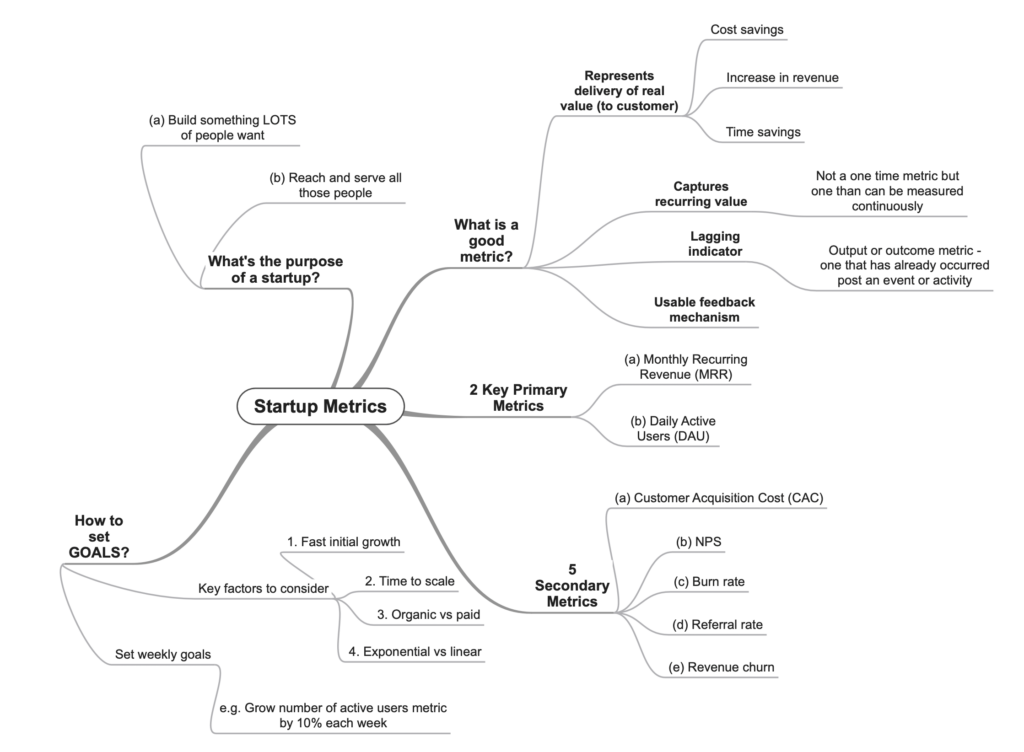The key purpose of a startup is to first and foremost “build something that lot’s of people want” and secondly make sure that you “reach and serve all those people“.
But how do you make sure your startup does stick to the above key purpose? Well, there has to be a definitive way of tracking the progress made against the actions and targets that you have defined as the strategy for the startup.
What constitutes a good metric?
For a metric to be a good and the right one, it has to have the following key characteristics
- Represents delivery of real value (to its customers either in terms of cost savings, new revenue generation or time saving etc.)
- Captures recurring value (should not be a one time metric but one that can be measured on a continuous basis)
- Lagging indicator (should be an output or outcome metric – one that has occurred as a result of some action or event)
- Usable feedback mechanism (continuous loop where feedback can be easily captured and shared for decision making)

What the primary and secondary Key Metrics that a startup must definitely track?
It is highly recommended that during early stages, a startup must primarily focus on only those one or two key metrics that help measure the real progress and help making decisions and course corrections faster. Also it depends on the business model of your startup. For a SaaS startup that has a pay per user per month model, the two key metrics that need to be measured are;
- Monthly Recurring Revenue (MRR)
- Daily Active Users (DAU)
Besides the above defined primary key metrics, there is also a need to track at least 3 and at max 5 secondary key metrics as below;
- Customer Acquisition Cost (CAC)
- Net Promoter Score (NPS)
- Burn Rate
- Referral Rate
- Revenue Churn
Settings Goals for a Startup
Once the key metrics have been identified the next most important thing is to set the right goals. To make sure you are setting the right goal, make sure to identify which of the following characteristics does it represent;
- Fast initial growth
- Time to scale
- Organic vs paid
- Exponential vs linear
Note: As an early stage startup, you must be setting WEEKLY goals (and not MONTHLY or QUARTERLY) so that it helps you in measuring progress and taking all the necessary corrective actions at the right time.
